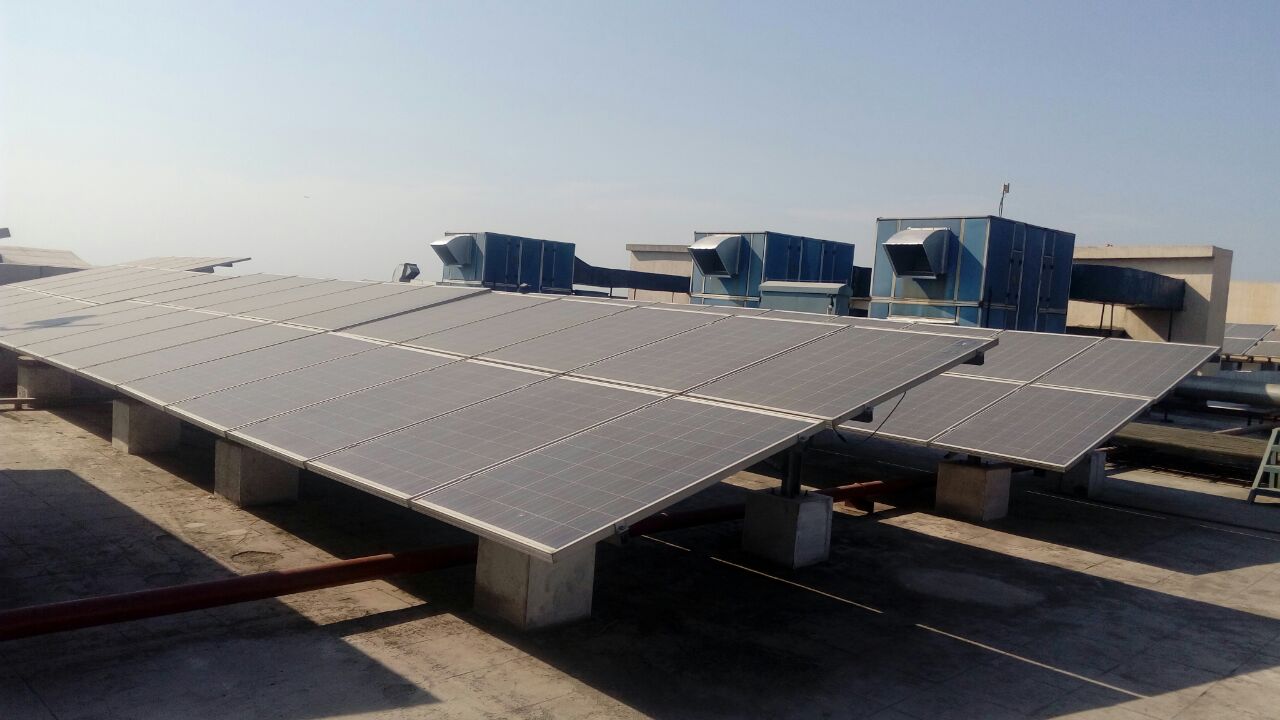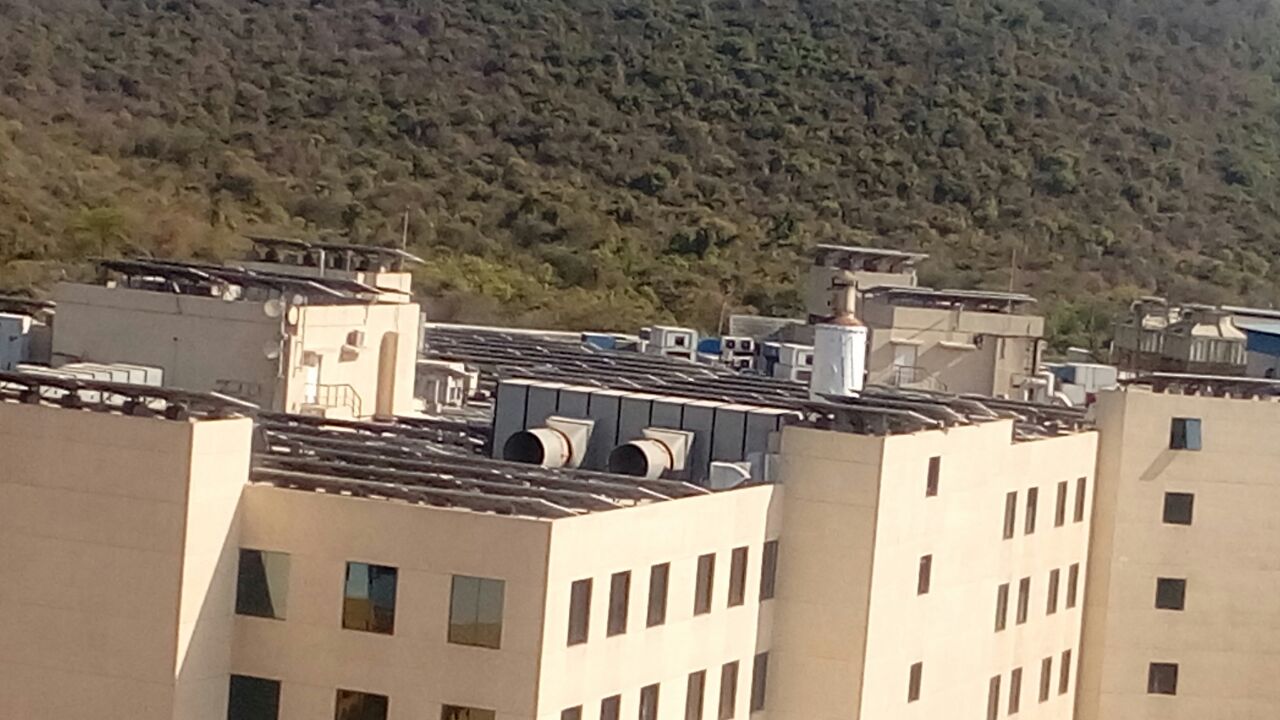Motivation
Urged by the need to fulfill the RPO norms and to set an example in sustainability, Shriram-The Gateway, a Special Economic Zone (SEZ) situated in Chennai has gone solar by setting up rooftop solar power plants over their buildings.
The management believed that installing a solar system can help attract multinational companies to set up offices in the SEZ. Having a solar installation can facilitate getting a LEED certification for best-in-class building practices.
Reinforcing their motive to go solar is the availability of the option to go for OPEX financing model where the customer does not have to pay any upfront costs. Under the OPEX model, the solution provider brings in the investment for the project. Moreover,the entire responsibility of maintenance is held by the solution provider. The customer just has to pay for the electricity generated from solar.
The SEZ was started in 2008 and is currently bearing 15 prominent IT companies. Companies like Accenture, CSS, Payoda, Mobius, Sutherland, TAKE Solutions, etc. have already set up offices in the SEZ.
Description of the rooftop solar power plant
Some interesting details regarding the plant has been mentioned below.
| Capacity | 700 kW |
| Financial Model | Build, Own, Operate, Transfer |
| EPC/Solution Provider | U-Solar Energy Solutions |
| PPA Period | 20 years |
The first 400 kW (100 kW each on 4 buildings), which took 1.5 months to complete, was commissioned in Oct 2014, and the following 300 kW (see figure below) was commissioned in March 2015. Subsequently, the rooftop was specifically designed to make enough space for the solar power plant. In fact, the chiller outlets and air processing units were optimally placed to remove any shading effects.
U-Solar as the EPC
The solar power plant was designed and implemented by U-Solar Clean Energy Solutions by the Build Own Operate and Transfer (BOOT) Model. This model has offered the client the following benefits:
- No high upfront costs
- O&M responsibility transferred to EPC
- PPA price below grid tariff rates
- Transference of solar system at the end of PPA period
The main reason the client chose this model of financing is that they were not keen on allocating any funds for a venture not part of their core business.
As there are no financial risks observed with the BOOT model (a variant of the Build Own Operate model), PPA tariff was the only selection criteria for choosing the EPC. The EPC was selected through a bidding process and the lowest tariff was offered by U-Solar.
The Shriram Group management is extremely satisfied with the solution. Despite signing an agreement to clean the panels once a month, U-Solar, showing the flexibility that smaller firms bring forth, has recently agreed to undertake bi-monthly O&M as per the clients’ request, owing to the dusty nature of the environment.
Apart from this, U-Solar also ensures that the client regularly monitors the system by logging into the monitoring solution on a frequent basis and checks the generation details.
Scope of Solar for SEZs
Despite the fact that solar make only a limited contribution for SEZs, with only 3-5% of energy generation met by rooftop solar, it does help meet their sustainability objectives.
Similar to Shriram Group, U-Solar has also implemented a 112 kWp solar system for another SEZ in Hyderabad – The Raheja Mindspace IT Park.
Moreover, unlike in many other sectors where unavailability of net metering can be an obstacle, SEZs face a major challenge of “no power wastage”. Being an IT park, they are equipped with backup power facilities in the form of UPSes to ensure that there is no wastage even on a non-working day.
Another interesting aspect is that the decision-making process for the solar installation was quick. It took merely 3 months to get the go-ahead for the project from the management.
Off-site Solar Generation
There is the option to go for off-site captive solar generation for optimal utilization of functional buildings to meet a large amount of energy needs.
Off-site generation is a concept where a large, ground-mounted solar plant is set up at a remote place where the land prices are low, and the electricity is wheeled to the site that requires it. In this case, the consumer has to pay the open-access charges (such as wheeling charges, banking charges etc.) for using the grid. The exact charges depend on the state.
With the cost of solar power generation coming down, and with some states also providing incentives for solar such as lower or no open access charges, ground-mounted off-site solar power plants are increasingly becoming attractive as they can satisfy a very large proportion of a company’s power requirements, unlike a rooftop solar power plant that could satisfy only a relatively smaller portion.
With companies such as Shriram leading the way, one can expect many other SEZs in Chennai and other cities to follow this trend, thus popularizing solar in a big way in the commercial sector.
Solar Mango recently interacted with K. Harinarayanan, the Founder of U-Solar Clean Energy Solutions. A short interview which discusses his background, motivations and views on the solar industry has been covered below.
Solar Mango: Tell us briefly about your education and background.
K. Harinarayan: I founded U-Solar Clean Energy Solutions Pvt Ltd in 2009 and it is driven by the vision to make solar accessible to masses. Prior to this I was associated with MPPL Renewable Energy, Bangalore, in developing detailed business plans for setting up solar PV thin film units. I have also worked on developing different concepts for the deployment of PV solutions in rural India and has conceptualized a Management Information Systems (MIS) tool for monitoring Biogas and Biomass based power plants. I pursued my B.Tech from IIT Madras (IIT-M), an MS and MBA from the University of Wisconsin, Madison, USA.
SM: What got you interested in offering the OPEX model?
KH: The company U-Solar is built on a vision to make solar accessible to a wide range of customers. In order to achieve this we have to dissolve the barriers that come across in our way. One such barrier that we found at U-Solar, while going ahead with larger installations and especially with industrial sector is capex investment that is involved in rooftop solar. Despite the ROI being in the range of 3-5 years, for most of the industries, locking in lakhs of amount on an asset like this is least preferred as the same capex can be used in other priority works. Upon understanding this, we started exploring other lucrative options by which the client can get the benefits of rooftop solar with small or negligible capex involved. This is where we came out with the offerings of OPEX/BOOT model for industrial clients.
SM: What is your wish list for our governments – central and state – in order that solar power, especially distributed solar power grows much faster?
KH: To push the distributed solar power faster, I wish there should be some soft loans that can be made available from public sector banks for at least some verticals of the clients where one can avail the loans at the interest range of 4-5% instead of the present capital subsidy which is again only on papers as of now. Even if government starts providing subsidy, it will a lengthier process and we wont be assured of getting in on time.
SM: What are the key skills that you have in your team that you feel will help you overcome the challenges and grow at the pace you wish?
KH: Our skills and expertise lies in the design and execution of the project as per the site requirement. Be it a large scale rooftop in the range of MW or small scale of the range of kW, our design and implementation team, with experience of executing more than 5 MW of rooftop solar, is well versed with the present technology that helps our client in getting the best out of the available resources at site.
SM: Even at 100 GW, solar will contribute not much more than 5% of our total power needs by 2022. How do you then foresee solar becoming a more powerful energy source, rather than being a marginal player?
KH: If you actually look at the development of solar energy by yearly capacity additions to that of the other energy sectors (coal, wind, etc.) solar is growing at much higher rates than that of any other energy generation. Solar energy is much promising compared to other source of energy because of the reason of abundance sun source available in India, improving in technology and increase scale of manufacturing. On the other hand ,conventional energy sources are depleting day by day, wind energy has its own limitations and it is same with hydro power as well. So this will definitely tell us that solar will be more powerful energy source in near future.
SM: What are your suggestions for those keen on entering the solar power industry, either as entrepreneurs, or for their career?
KH: I always welcome new entrepreneurs to this field as there are lot of challenges to take and solve them particularly in finance and manufacturing domains.
Interested in choosing U-Solar as you EPC? For more details please contact Mr. Nikhil.
Email: nikhil@solarmango.com
Ph: 9940617877
 Skip to content
Skip to content



Good interaction with Mr. K. Hariharan. Good work.